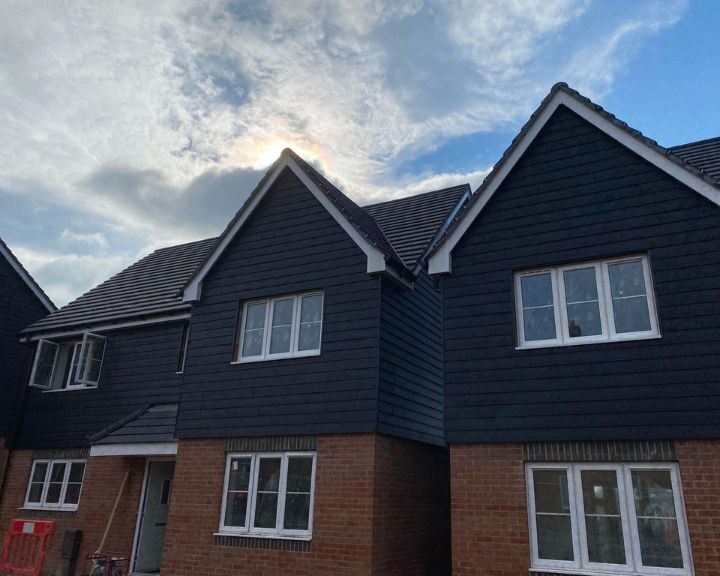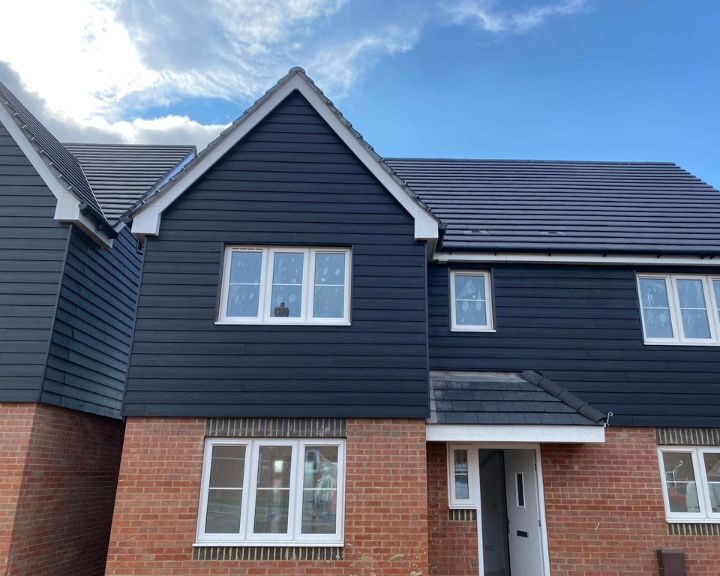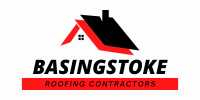Cladding Basingstoke
Cladding Installation Services in Basingstoke and Hampshire
Looking for professional cladding installation and repair services in Basingstoke and Hampshire? Look no further than Basingstoke Roofers. With years of experience working with cladding, we have the knowledge and expertise to provide the highest quality installation and repair services to meet your specific needs and requirements.
We use the latest tools and techniques to ensure that your cladding is installed or repaired to the highest standards. Whether you’re a domestic or commercial customer, we have the skills and experience to provide the best possible service, no matter the size or complexity of the job.
Our cladding installation and repair services are available for properties of all sizes, from small homes to large commercial buildings. We understand that every customer has unique needs and requirements, and we work closely with you to ensure that your cladding installation or repair project is completed to your satisfaction.
Our team of cladding experts is always on hand to ensure that the installation or repair process runs as smoothly as possible. We take pride in our work and always strive to provide the highest level of customer satisfaction. From start to finish, we will work with you every step of the way to ensure that your cladding project is a success.
So if you’re looking for professional cladding installation or repair services in Basingstoke and Hampshire, look no further than our team of experts. Contact us today to discuss your requirements, and we’ll be happy to provide you with a free, no-obligation quote. Call us or fill out our enquiry form to get started.
Get A Free Quote
What are the Benefits of Cladding?
Cladding is an excellent way to improve the look, functionality and overall value of your property. One of the main benefits of cladding is its low maintenance requirements, which means less time and money spent on upkeep. Additionally, cladding provides improved insulation and added protection from the elements, keeping your property warm and safe. Furthermore, cladding can enhance the style and aesthetics of your property, increasing its value and appeal. Take a look below for a detailed overview of the benefits of cladding.
Cladding is an excellent choice for those looking for a low maintenance option for their property’s exterior. With little effort required to keep it looking its best, cladding is an ideal choice for busy homeowners who want to focus their time and energy on other tasks. Unlike traditional siding options, cladding does not require painting or staining, which means that customers can avoid the cost and hassle of regular maintenance. Additionally, certain types of cladding material such as uPVC or composite are incredibly easy to clean, making it a straightforward process to keep them looking like new. Cladding’s durability and resistance to weathering also make it a practical choice for homeowners who want to invest in a long-term solution that will look great for years to come. By choosing cladding, customers can enjoy a beautiful, low maintenance exterior without sacrificing quality or style.
Insulating your property is essential for maintaining a comfortable living space all year round while reducing energy bills and benefiting the environment. Cladding is an excellent way to improve insulation, providing an extra layer of protection against the elements. This layer of material can be installed alongside insulation material to create a more efficient insulation system. With cladding, you can keep your property warm in winter and cool in summer without relying as much on traditional heating or cooling methods, such as radiators or air conditioning. As a result, this can save you money on energy bills and contribute to reducing your carbon footprint. With improved insulation, you can also reduce noise pollution and protect the structure of your property from weather damage. If you’re looking to upgrade your property’s insulation, cladding is an excellent solution that will provide numerous benefits.
Cladding is an excellent way to enhance the overall protection of a property from the elements. Not only does it offer an additional layer of protection against wind and rain, but it can also help protect against extreme weather conditions. Cladding is a durable and long-lasting material that can provide an extra layer of insulation, helping to keep your property warm in the winter and cool in the summer. Additionally, cladding can act as a barrier against insects, pests, and vermin that could potentially get into your property. By preventing these unwanted guests from entering your home, cladding can help to maintain the integrity of your property and protect against potential damage. With a wide range of cladding options available, it’s easy to find a style and material that suits your preferences and budget, while also offering added protection to your property.
Enhancing the visual appeal of your property is an excellent way to increase its value, and exterior cladding can be a smart investment for achieving that goal. Attractive cladding can improve the aesthetics of your property and make it more appealing to potential buyers, who are looking for a visually attractive property to invest in. Cladding not only adds a modern look to your property but also protects it from adverse weather conditions, which is essential for maintaining the longevity of the property.
In addition to increasing the value of your property, cladding also provides an excellent return on investment. As it is a long-lasting solution, the money spent on cladding can be regained in the future when you decide to sell the property. The benefits of cladding can be enjoyed for years to come whilst using the property. Therefore, if you are looking to add value to your property and make it more visually attractive, cladding is an investment worth considering.
With the right materials, cladding can add a modern touch to a property or enhance its traditional look. There are various materials that can be used for cladding, such as timber, brick slips, metal, and composite panels. Each material has its own unique features and benefits, and can be chosen based on the design and style of the property.
Installing new cladding can also help refresh the appearance of a property that has aged or deteriorated over time. For instance, timber cladding can be an excellent replacement for old brickwork, while composite panels can give a sleek finish to any building. By opting for new cladding, property owners can benefit from improved insulation, weather protection, and a more attractive exterior.
Cladding can significantly enhance the look and feel of a property while providing practical benefits, making it a worthwhile investment for any property owner.

The Different Types of Cladding
Cladding is a great way to add a protective layer to the exterior of a building while enhancing its aesthetic appeal. Different types of cladding are available, each with their own unique benefits. uPVC cladding is a popular choice for its low maintenance requirements, while composite cladding offers durability and resistance to fire. Weatherboard cladding provides excellent protection against harsh weather conditions, and timber cladding adds a natural and traditional feel to a building. Read below to discover more about each material and find the perfect cladding for your project.
uPVC cladding is a popular material used in exterior cladding applications due to its numerous benefits. uPVC stands for unplasticized polyvinyl chloride, which is a rigid plastic material that is strong, durable, and resistant to weathering. It is an excellent alternative to traditional timber cladding, which requires regular maintenance to prevent rotting, warping, and other forms of damage.
One of the most significant benefits of uPVC cladding is its low maintenance requirements. It does not need to be painted or treated, and it is easy to clean with soap and water. It is also resistant to fading, cracking, and peeling, ensuring that it looks great for many years.
uPVC cladding is also an excellent insulator, providing a thermal barrier between the exterior and interior of a building. This helps to reduce heat loss and lower energy bills, making it an ideal choice for eco-friendly building projects.
uPVC cladding is a great material to use for cladding due to its durability, low maintenance, and energy-efficient properties. It is an excellent choice for new cladding installations, providing a long-lasting and attractive finish to any building.
Composite cladding is a popular choice for exterior cladding due to its durability, strength and low maintenance properties. It is made from a combination of wood fibres, plastic and additives, which are compressed and formed into panels that resemble traditional timber cladding. Unlike traditional timber cladding, composite cladding is resistant to rot, insects, warping and fading, which makes it an excellent choice for buildings that are exposed to harsh weather conditions.
In addition to its superior durability, composite cladding is also environmentally friendly as it is made from recycled materials. It also requires minimal maintenance, which means it is a cost-effective choice for building owners.
Composite cladding comes in a variety of colours, textures and finishes, which means it can be customized to suit the aesthetic of any building. It is easy to install and can be used in both new construction projects and renovations. Overall, composite cladding is a versatile and practical material that offers numerous benefits for building owners and architects looking to create a durable and attractive exterior finish.
Weatherboard cladding is a popular choice for homeowners and builders alike, due to its durability and versatility. It is a type of exterior cladding that is designed to protect the walls of a building from the elements, such as wind, rain, and UV rays. This type of cladding is typically made from timber, although there are also options available made from other materials such as fibre cement.
One of the key properties of weatherboard cladding is its ability to withstand harsh weather conditions, making it ideal for buildings located in areas that experience extreme weather conditions. Additionally, it is relatively easy to install and maintain, which makes it an excellent choice for both new construction and renovation projects.
The benefits of using weatherboard cladding as part of a new cladding installation are numerous. Firstly, it offers excellent insulation properties, which helps to reduce energy consumption and heating costs. Secondly, it is an eco-friendly material that is made from sustainable sources. Lastly, it is available in a wide range of styles and colours, which means it can be customised to suit the specific requirements of any building project.
Timber cladding is a popular material used in exterior wall cladding installations. It involves the use of wood panels to cover the exterior walls of a building. Timber cladding comes in a wide range of wood types, including cedar, larch, and oak, and it can be cut into various shapes and sizes to suit different designs and architectural styles.
One of the main benefits of timber cladding is its natural beauty and warmth, which can add a touch of elegance and character to any building. It also provides excellent insulation and soundproofing properties, making it a good choice for energy-efficient and environmentally-friendly projects.
Additionally, timber cladding is easy to install and maintain, making it a cost-effective option for many homeowners and builders. It is also a sustainable and renewable material, which means that it is a good choice for those looking to reduce their carbon footprint. Overall, timber cladding is an excellent material for wall cladding installations, offering both aesthetic and practical benefits.

Frequently Asked Questions
Maintaining the exterior of your building is essential, and wall cladding is no exception. Regular cleaning is necessary to preserve its appearance and prepare it for maintenance. Wood cladding, in particular, can experience staining from surface fixings and fading due to exposure to the elements. Therefore, it is important to carry out maintenance to prevent any further damage and to ensure that your cladding remains in good condition for a long time.
Cladding is an essential component of modern building construction, providing protection against the elements while enhancing the aesthetic appeal of the structure. Typically, cladding can last anywhere from 20 to 50 years, depending on the material and maintenance practices. High-performance PVC cladding is known for its durability, and with proper care and attention, it can last up to 50 years. However, regular cleaning, maintenance, and inspection are necessary to ensure the longevity of the cladding.
A good cladding material needs to meet several requirements to ensure that it provides the necessary protection and benefits for your home. Firstly, it must be waterproof to protect the interior from the elements. Additionally, it should offer thermal and sound insulation, and be fire-resistant. The cladding system you choose will have an impact on the environmental performance, cost, aesthetic appeal, and property value of your home. Therefore, it is important to consider these factors when selecting a cladding material.
The thickness of cladding for garden buildings depends on the budget and intended use. As a general rule of thumb, thicker cladding is more expensive. For those looking for a budget wooden shed, cladding thickness of 7-8mm overlap is common. However, for those investing in a top-of-the-range log cabin, a thickness of at least 44mm is expected. Ultimately, the thickness of cladding should be chosen based on the intended use and budget of the garden building.
Harsh weather conditions are a common cause of cracks in cladding. When subjected to extreme changes in temperature, such as from boiling sun to freezing temperatures, the coating can become brittle and crack over time. This is especially true for coatings that are not designed to withstand such harsh conditions. The weathering process can also cause the coatings to peel and become discoloured, further contributing to the degradation of the cladding. Therefore, it is important to choose coatings that are suitable for the climate and weather conditions in which they will be used to prevent cracking and other forms of damage.
Professional Cladding Installation Near Me
Basingstoke Roofers is a reliable and experienced company that provides exceptional cladding repair and installation services to clients in various areas. Our team is made up of skilled professionals who are dedicated to delivering quality workmanship that exceeds customer expectations.
Our cladding repair and installation service is designed to cater to a wide range of needs, from minor repairs to full installations. We use only the highest quality materials and techniques to ensure that your cladding is restored to its original condition, providing a long-lasting and effective solution to your problem.
We are proud to serve the following areas:
- Aldershot
- Andover
- Bracknell
- Crowthorne
- Farnborough
- Farnham
- Fleet
- Newbury
- Reading
- Thatcham
- Winchester
- Wokingham
Our commitment to providing excellent customer service is evident in our attention to detail and our willingness to go the extra mile to ensure customer satisfaction. We take the time to understand your needs and offer customized solutions that suit your specific requirements and budget.
If you need cladding repair or installation services in any of the areas we serve, please don’t hesitate to contact us today. Our friendly and knowledgeable team is ready to assist you with your inquiry. Call us now or fill out our enquiry form, and we’ll get back to you promptly.

